Heshun Ancient Town is located 4 kilometers southwest of Tengchong City, Baoshan City, Yunnan Province, and is a national 5A-level tourist attraction. Surrounded by volcanoes on all sides, the town sits in a horseshoe-shaped basin. The highest altitude within its borders is 2091 meters, the lowest is 1490 meters, and it covers a land area of 17.4 square kilometers. It boasts a rich historical and cultural heritage, serving as a renowned town for commerce, culture, and tourism on the Southern Silk Road. It is also a famous hometown of overseas Chinese, featuring unique overseas Chinese culture and horse caravan culture. The ancient town is home to numerous ancient structures, including over 100 century-old courtyards, 8 ancestral halls, 9 temples, 9 stone bridges, 6 laundry pavilions, 9 memorial arches, 13 village gates, and 24 moon platforms.
Historical Culture
Heshun Ancient Town was originally named "Yangwendun". Later, it was renamed "Heshuun" (meaning "river flowing smoothly") because a small river winds through the village. Eventually, it was elegantized to its current name "Heshun", which carries the meaning of "scholars and people living in harmony". This is the hometown of Ai Siqi, a renowned philosopher, and also the birthplace of the "Jade Kings". In 2003, Yunnan Bailian Heshun Tourism and Culture Development Co., Ltd. began a 40-year operation and management of the town. In 2006, it was ranked first in the list of the first "Top 10 Chinese Tourism Leading Brands". In 2007, it was named a "National Historical and Cultural Town (3rd Batch)". In 2013, it was included in the special stamps "Chinese Ancient Towns (I)". In 2019, it became a "Characteristic Town of Yunnan Province", and in 2020, it obtained the qualification to be established as a national 5A-level tourist attraction.
Major Scenic Spots
Heshun Shunhe Memorial Archway
Built in 2001, it is a landmark structure of Heshun. Using palindromic techniques, the two characters "Heshun" are arranged to form the combination "Heshun Shunhe" (meaning "harmony and smoothness"), embodying good aspirations and wishes. The two characters "Renli" (meaning "a village of benevolence") on the back of the archway were written by Zhao Fan, indicating that Heshun is a place that values traditional culture of benevolence and morality.
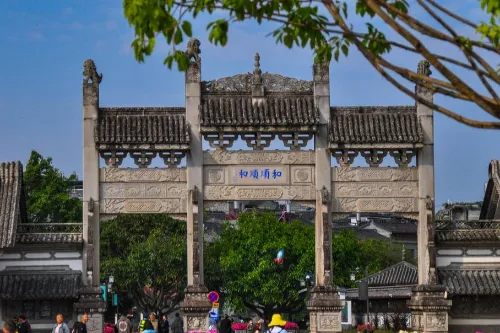
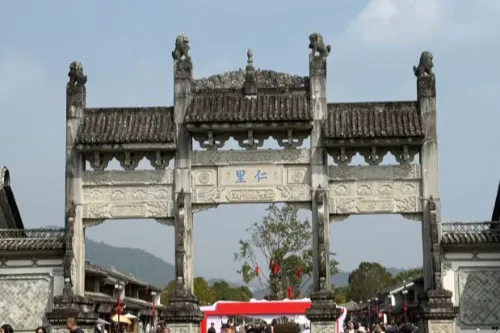
Yuzhou Pavilion
It was built in memory of Mr. Cun Shusheng, the first principal of Yiqun Middle School. The stone tablet inscribed with "Yuzhou Pavilion" in the pavilion was written by Chu Tunan. The road beside the lotus pond is called Qiunong Road, named after Li Zuhua, the second principal of Yiqun Middle School, reflecting the tradition of respecting teachers and valuing education in Heshun.
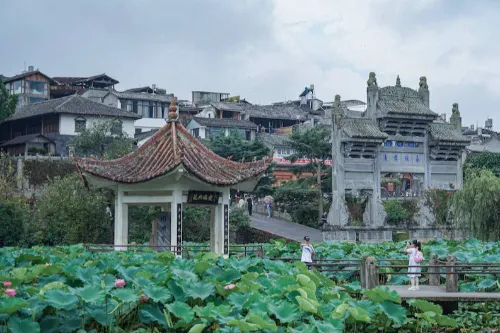
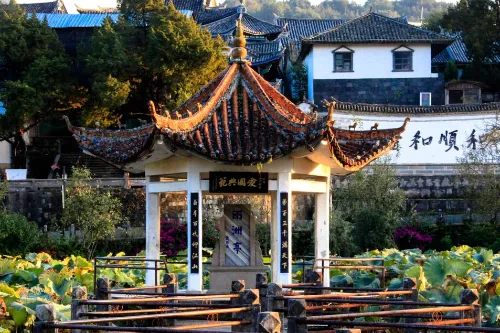
Shuanghong Bridge (Double Rainbow Bridge)
The old bridge was first built in the early years of the Jiajing era of the Ming Dynasty and was renovated in the 10th year of the Guangxu era of the Qing Dynasty. The new bridge was built in 1921. The two bridges look like two rainbows lying on the water, with an exquisite design. The banks of the bridge are lined with green willows.
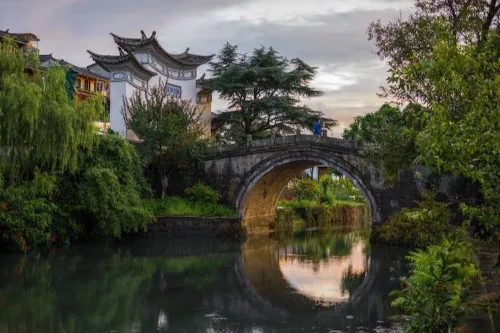
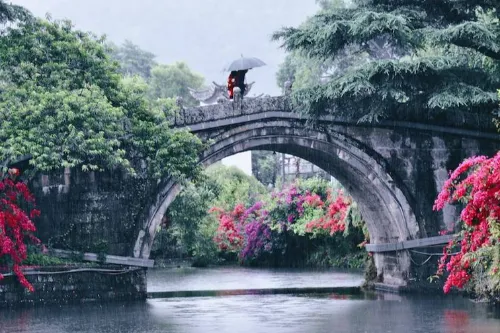
Water Impression
Located in Xianhe River of Heshun, Xianhe River is a wetland characterized by biodiversity and the main source of Sanshe River in Heshun. It has a sound ecosystem, with 187 species of plants, 58 species of birds, 21 species of mammals, 14 species of reptiles, and 9 species of amphibians.
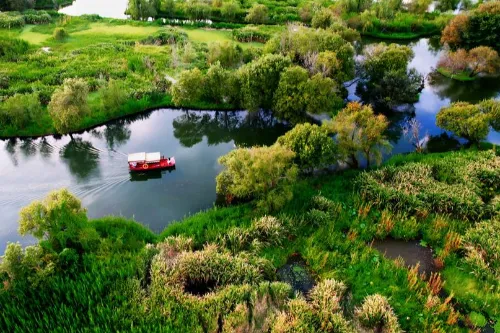
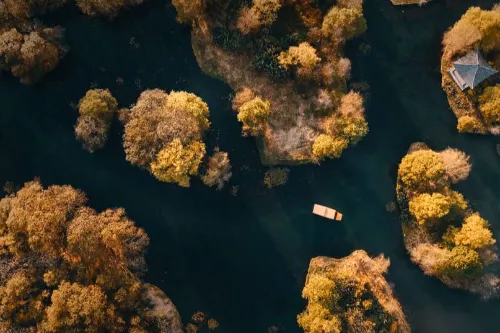
Thousand-Hand Guanyin Ancient Tree Group
Composed of seven towering century-old camphor trees, five of which are arranged in a straight line. When viewed up close, they look like a green canopy; when viewed from a distance, their branches spread out like a thousand hands, resembling the Thousand-Hand Guanyin.
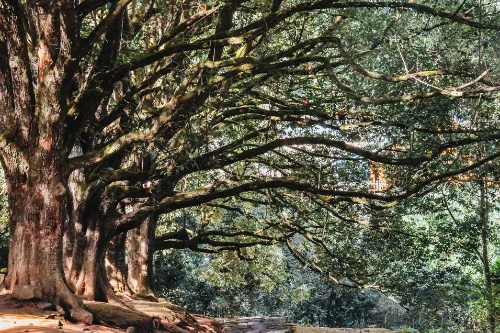
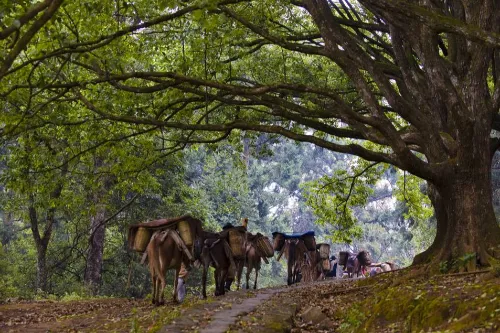
Yuanlong Pavilion
Originally a Guanyin Hall, the pavilion was built in the 27th year of the Qianlong era of the Qing Dynasty and named Yuanlong Pavilion. It is a Taoist temple integrating Confucianism, Buddhism, and Taoism. In front of it is Longtan Pond, and behind it are lush ancient trees. It consists of a mountain gate, a Dragon King Hall, and other structures.
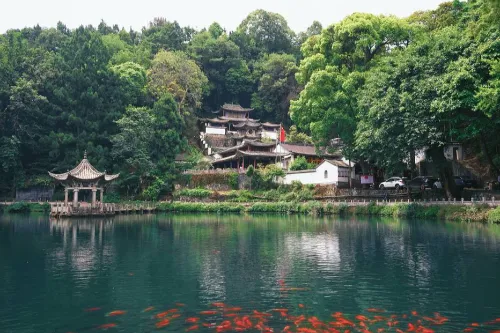
Zhongtian Temple
Located at the foot of the back mountain southwest of the main village, it was first built in the 8th year of the Chongzhen era of the Ming Dynasty with funds donated by Zhang Chaohai, a local resident. After subsequent expansions and renovations, the temple consists of a mountain gate, a Maitreya Hall, and other buildings, constructed along the main axis against the mountain. It is the largest temple in Heshun, covering a total area of 5,000 square meters, with the main hall area being approximately 1,140 square meters and the auxiliary area about 777 square meters.
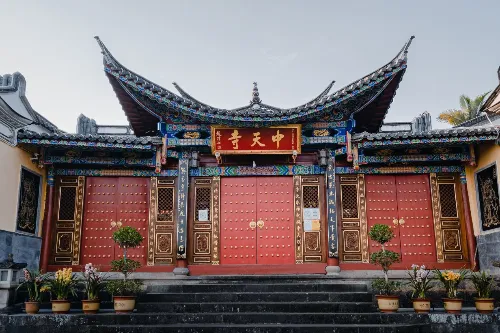
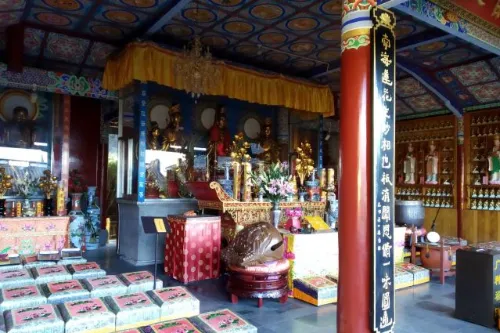
Kui Pavilion
Also known as Aofeng Temple, it was first built in the Ming Dynasty, and the existing buildings were reconstructed in the 19th year of the Guangxu era of the Qing Dynasty. Local people worshipped Kuixing (the god of literary fortune) here and ran schools. It is also a place for summer retreats and leisure. Composed of a mountain gate, a lobby, and other buildings, it preserves 33 pieces of stone inscriptions and poems dating back to the Ming Dynasty.
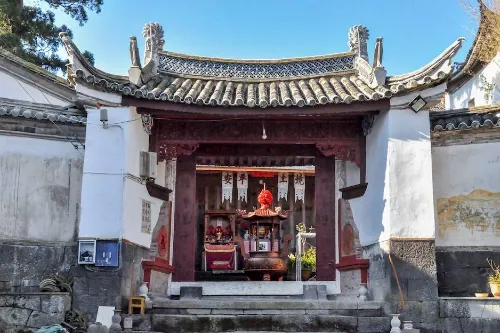
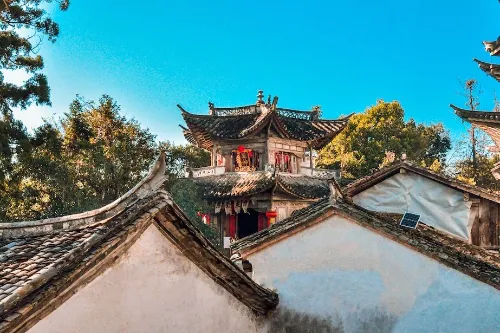
Wanlouzi Folk House Museum
Named for the fact that the building is constructed along the curved lane, it is a compound courtyard complex with three courtyards, three main rooms, and a screen wall. It is also the name of the famous business firm "Yongmaohe" and the Li family. The business firm has a glorious history of over 100 years, spanning five generations.
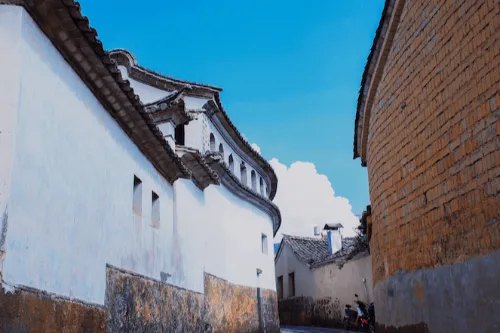
Centenarian Archway
Erected in honor of elderly people who lived to a ripe old age and were highly respected. The Centenarian Archway under the Li Ancestral Hall in Shuishui Village was built to celebrate the 100th birthday of Li Degui's wife. The stone archway bears the inscription "Tianmu Peak High" written by Tang Jiyao, the governor of Yunnan Province, and is a symbol of longevity for the people of Heshun.
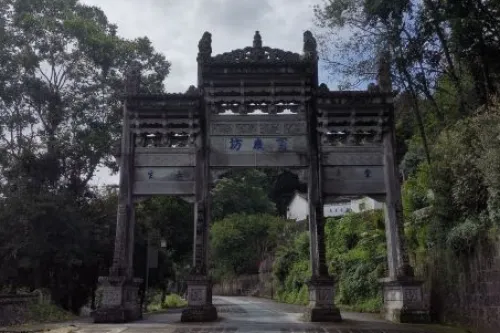
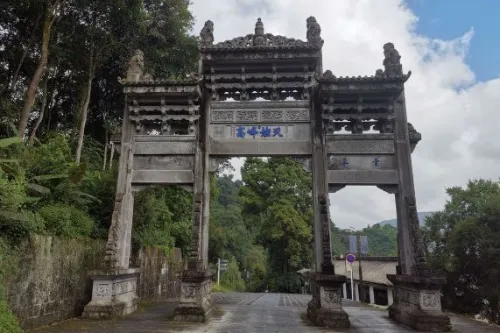
Prologue Hall of the Grand Horse Caravan Museum
It exhibits contents related to the Southern Silk Road, where transportation mainly relied on horse caravans. The sculptures in the hall depict the scene of "horse gang leaders" leading large horse caravans across mountains.
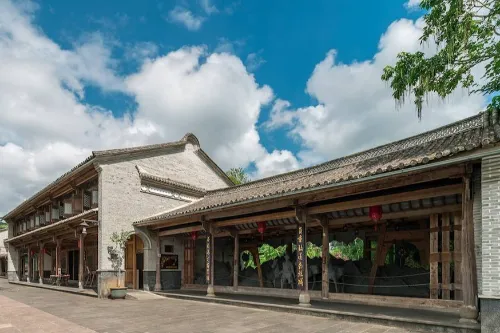
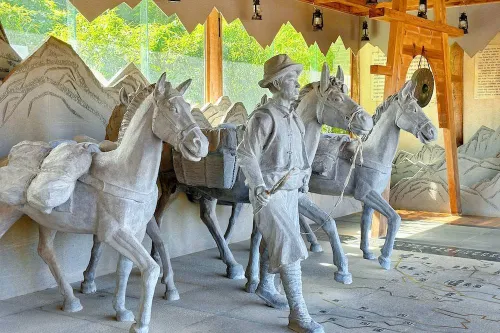
Yunnan-Burma Anti-Japanese War Museum
Built in 2005 on the former site of the command post of the 20th Group Army of the Chinese Expeditionary Force that recaptured Tengchong, it is China’s first private-funded and privately-collected museum themed on the Yunnan-Burma Anti-Japanese War. In 2013, the physical exhibits in the museum were moved to the Western Yunnan Anti-Japanese War Memorial Hall.
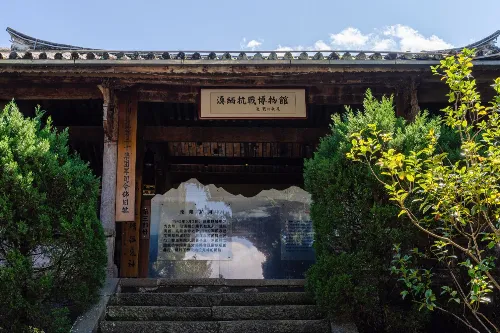
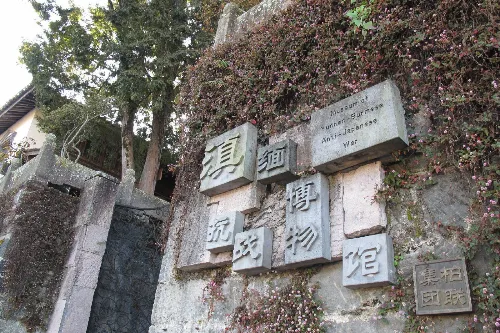
Liu Clan Ancestral Hall
Built in the 5th year of the Xianfeng era of the Qing Dynasty, it has a history of nearly 150 years. In front of it lies a half-moon-shaped lotus pond, with a double-arched stone bridge leading to the moon platform. A memorial archway-style gate stands on the moon platform. Inside the ancestral hall, there are successively a main hall, side chambers, and a main hall; the main hall enshrines the ancestor of the Liu clan, and a clan culture museum is set up to display the clan culture.
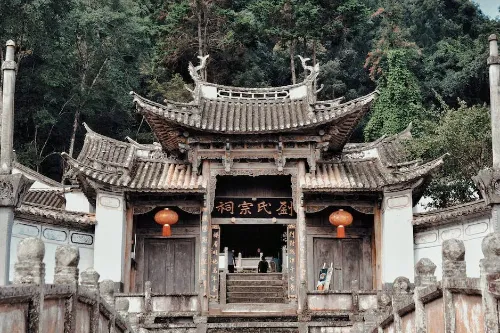
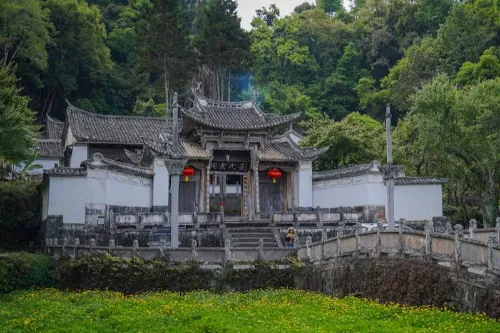
Tour Route
Classic One-Day Tour Route: Scenic Area Entrance → Heshun Shunhe Memorial Archway → Shuanghong Bridge → Laundry Pavilion → Yuanlong Pavilion → Ai Siqi Memorial Hall → Thousand-Hand Guanyin Ancient Tree Group → Liu Clan Ancestral Hall → Li Clan Ancestral Hall → Yunnan-Burma Anti-Japanese War Museum → Wanlouzi Folk House Museum → Kui Pavilion → Zhongtian Temple → Centenarian Archway → Water Impression → Yuzhou Pavilion → Scenic Area Exit.
Travel Tips
- It is recommended to visit in the early morning or evening to avoid the strong midday sun, as the light and shadow effects of the ancient town are at their best during these times.
- Wear comfortable walking shoes, as the ancient town has many stone-paved roads, which is convenient for long hours of sightseeing.
- Rent an audio guide (about 20 yuan per unit) to gain a deeper understanding of the overseas Chinese culture and the history of horse caravans.
- Try local specialties such as Heshun Songhua Cake and roasted pork knuckles; it is recommended to experience traditional refreshments in the old teahouses of the ancient town.
- Take sun protection and mosquito repellent measures in summer, and pay attention to wind protection and warmth preservation in winter, as Tengchong has a large temperature difference between day and night.
Notes
- The ancient town has many ancient buildings; climbing and carving on them are prohibited, so please protect the cultural relics.
- Respect the living customs of local residents and keep quiet when entering ancestral halls and temples.
- The Xianhe River Wetland is an ecological protection area; do not feed the birds or litter.
- When purchasing specialties such as jadeite and tea, choose the designated stores in the scenic area and ask for formal invoices.
- Be careful of slipping during the rainy season; some mountain roads are steep, so it is recommended to travel with companions.
Transportation
- Bus: Take Bus No. 6 from Tengchong City to Heshun Ancient Town directly, with a fare of 2 yuan. The departure time is from 6:30 to 18:30, with a frequency of about one bus every 15 minutes.
- Taxi: The fare from Tengchong urban area to Heshun Ancient Town is about 15 yuan, and the journey takes 15 minutes.
- Self-driving: Navigate to "Heshun Ancient Town"; the scenic area has a parking lot, and the parking fee for cars is 10 yuan per day.
Opening Hours
Open all year round. The main entrance of the scenic area is open from 7:30 to 20:30 daily. The opening hours of each scenic spot are slightly different, usually from 8:00 to 18:00.
Ticket Information
Adult ticket: 55 yuan per person.
You can search for the official WeChat public account of the scenic area "和顺古镇景区" to get the latest updates or buy tickets online.
Online Booking
Click here to jump to the Trip.com ticketing platform for ticket purchase.


